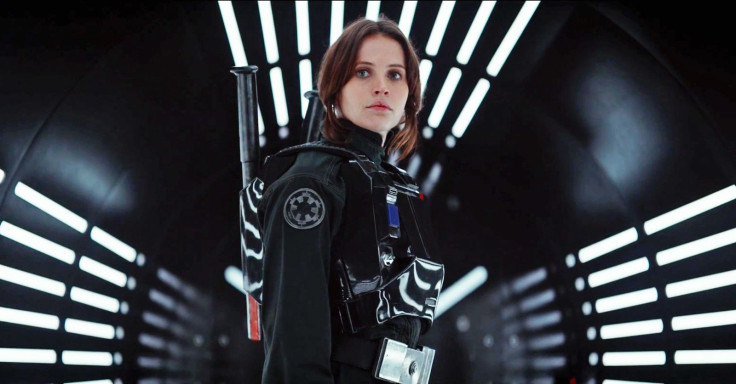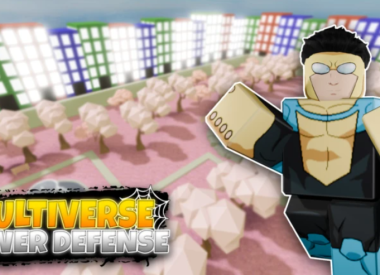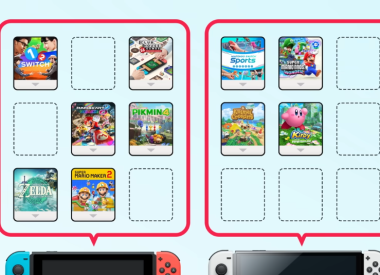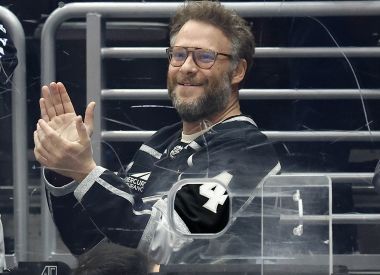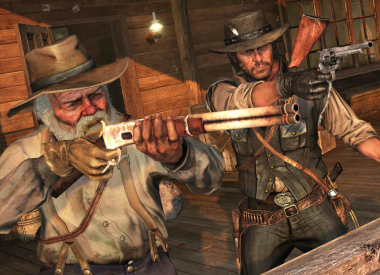When first announced, Rogue One: A Star Wars Story sounded reverential. Risk averse. A movie spun out entirely from a sentence in the opening crawl of the original Star Wars? Give decades for the teams of nostalgia scientists to ruminate and it’d be hard to imagine a story more firmly snuggled up Star Wars’ butt.
Last year, Star Wars: The Force Awakens exchanged Jakku for Tatooine, rebuilt the Death Star, palette-swapped The Empire, pasted a Resistance sticker over the Rebel Alliance and hinged its plot on a droid with a secret message. It looked as if Disney had mummified the Star Wars series, removing its living guts until they had a beautiful corpse to wheel out for crowds. Embalmment still has its compensations, like charismatic new young people to play out the same dramas, but the limitless worlds winking on the galactic disc had been reduced to dust and sold to us as a cheap curative.
So it is a great relief to discover just how different Rogue One: A Star Wars Story feels from The Force Awakens and from everything that has come before. It is, in some ways, a galaxy revivified. As opposed to Maz Kanata’s collection of moving statuary, the worlds of Rogue One are brimming with alien lives. The Star Wars galaxy once again feels like an ecosystem, bubbling over with a million billion stories.
Which is not to oversell the point. There is nothing especially subversive or experimental about Rogue One. It is as stuffed with groan-inducing fan nods, predictable beats and by-committee storytelling as any massive franchise brand extension. But stretching the unique opportunities of the anthological A Star Wars Story form over light years alters the parameters of the Star Wars story-space continuum just enough to birth new constellations.
Rogue One: A Star Wars Story is about a team of Rebel Alliance fighters stealing the Death Star plans. We are no longer following the exceptions. There is no Luke Skywalker Very Special Boy, no Princess, no Jedi Master. It makes for a surprisingly different feel to the proceedings.
Watching Rogue One highlights just how little the other Star Wars movies are about stars or wars. Instead, they’re frequently about emotions, following people governed by fears and passions. In The Empire Strikes Back Luke throws aside the future of the Jedi Order and the galaxy to save his friends and confront his nightmares. Darth Vader finds the spark of goodness left in him to kill the Emperor. The Force Awakens subordinates politics to Kylo Ren’s anger. The fate of billions falls on the shoulders of angsty, horny teens.
The characters in Rogue One are not so ruled by passion. Jyn Erso (Felicity Jones) starts the movie a lone wolf, a criminal with unspecified crimes. Yet she soon falls in line with the mission, the transition more a matter of plot than of emotion. Rebel intelligence agent Cassian Andor (Diego Luna) has hardened himself, quashing his discomfort with killing for the cause. K-2SO (Alan Tudyk) has no say in the matter (or any matter), he’s a droid. Bodhi Rook (Riz Ahmed) is an Imperial defector laden with remorse with the barest whiff of a backstory. He mostly just pilots. Why did Chirrut Imwe (Donnie Yen) and Baze Malbus (Jiang Wen) join this suicide mission? Because that’s what the Force told Chirrut to do and Baze follows Chirrut (despite his annoying, childlike mantra).
But mostly the characters of Rogue One are there because someone has to steal the Death Star plans. We’re not on their adventure, they’re on ours.
Whereas characters were the soul of The Force Awakens — Rey, Finn, Poe Dameron, BB-8 and especially Kylo Ren among its only compensations — Rogue One has solely instruments. And while they all look different and are easy to distinguish from one another in the several robust action sequences, their emotions are waypoints, not character arcs. Even Jyn Erso’s detailed backstory is primarily an incubator for little data points the plot needs later.
It’s not that Rogue One is cold or distant, more that it’s stubbornly unmoved by its own characters. Instead, their fears and wants are utilized the moment they can be made instrumental: Jyn Erso can cry over her kidnapped father, but only as he’s delivering a holographic infodump on the Death Star’s weaknesses. Other characters don’t even achieve Jyn’s level of coherence.
The villains fare even worse. While Darth Vader’s potency is undiluted by Rogue One, the primary antagonist, Director Orson Krennic (Ben Mendelsohn), never gets the chance to come into his own. Too many of his formative conversations take place opposite a CGI recreation of Grand Moff Tarkin. Tarkin's waxen visage is downright squicky. Forcing its bad guy to argue against a poorly puppeted doll only ensures the ruination of both characters. It doesn’t help that Krennic goes down like a chump in the end.
Nor does it help that Rogue One’s acting is such a mixed bag generally. I’m not particularly attuned to human emotion or the simulation thereof, but even a Mon Calamari couldn’t miss Rogue One’s smattering of flat line readings, clarifying expositional interjections and tidbits of verbal cheese that might one day age into beloved and quoted sci-fi pulp. It’s telling that K-2SO, a robot lacking any sense of nuance or propriety, is the most enjoyable character.
Big ensembles full of half-drawn characters have succeeded before — especially in movies cited as inspirations for Rogue One like The Guns of Navarone and The Dirty Dozen — but it’s hard not to be a little disappointed every time Rogue One passes up interesting avenues of character drama. To give one example: Cassian Andor is assigned to assassinate Jyn’s father and hides this fact from her, but the eventual reveal feels neutered and perfunctory (as do most scenes of the ensemble dialoguing, all brief). Rogue One always wants to move on to the next planet.
Still, Rogue One mostly works anyway, precisely because it doesn’t need the people it's dragging along, except to pull various switches and press specific buttons. Instead, Erso and Andor, Imwe and Rook are the bodies we ride to the crowded markets of Jedha and Imperial base on Scarif. Rogue One triumphs on texture and scope. From ringed planets to crumbling Jedi monuments, Rogue One nails the sensation of eroded eons so essential to Star Wars’ mystique.
Well over half of Rogue One precedes in this way, hopping from planet to planet, following a trail of plot widgets exchanged for gunfights, scenery, swooping starships and K-2SO wisecracks. But it builds to an extravagant climax — X-wings above, Rebel troops fighting below — that’s a highlight of the entire Star Wars series.
The backbone of the scene is plot busywork that’d be ludicrous to describe. Something about having to get a radio signal out to let the Rebel fleet know to anticipate a different radio signal. Whatever. It may feel like a checklist of objectives in a Call of Duty game, but it girds a celebration of AT-ATs, dogfighting, stormtroopers, Rebel frigates and Imperial Star Destroyers both ecstatically playful in scope and consequential in effect.
The battle’s conclusion leaves the Rogue One characters right where they ought to be, their endpoints revealing that — despite all of their woodenness and half-baked characterizations — you did care about them, at least a little bit. Darth Vader has an extravagant part to play in this final desperate gambit, as he attempts to cut off the Rebel relay race delivering the Death Star plans to Princess Leia’s ship, the Tantive IV. In its final moments Rogue One sets aside all awkwardness and assumes, for bare moments, that grace only the Force can imbue.
If any movie should be held to the highest standards, it’s an immediate prequel to Star Wars: Episode IV A New Hope, the movie that changed what a movie could be and set millions of imaginations aflame. At its best, when none of its parts are misfiring, you may feel in Rogue One the reverberations of your mind’s Star Wars echoing back. Whether that’s good enough is something you can only decide for yourself.
Rogue One: A Star Wars Story has entirely different weaknesses and strengths from Star Wars: The Force Awakens. It’s possible that Rogue One will age just as awkwardly, but for now it feels like the greater success. By untethering itself from the ongoing Star Wars soap opera Rogue One builds to new and different achievements, no matter how many bumps it hits along the way. At times Rogue One can feel like fan fiction — teasing out reference-heavy minutiae and playing dream theater with Vader — but the final impression is of reverence (and, yes, a new hope) wrestled into form, transmuting the most familiar foundation stones of Star Wars into undiscovered elements.


